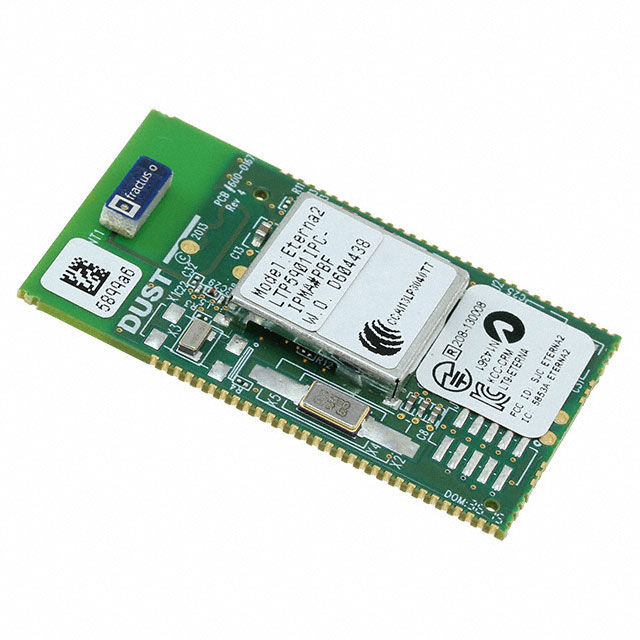What Are DIP Switches and Why Are They Still Essential in Electronics?
- joddiemarshall6
- Jul 23
- 4 min read
Introduction to DIP Switches
DIP switches, short for Dual In-line Package switches, are miniature manual electronic switches integrated into printed circuit boards (PCBs). These components are designed to allow users to control the behaviour of electronic devices without requiring software. Each switch in a DIP package can be toggled between ON and OFF states, making them ideal for setting configurations, selecting modes, or defining addresses in hardware systems.
Often seen in industrial controls, networking hardware, remote control systems, and embedded devices, DIP switches offer simplicity, reliability, and ease of access. While programmable interfaces have become more common, DIP switches remain valuable due to their low cost, high durability, and immediate tactile feedback.
How Do DIP Switches Work?
DIP switches function as a series of independent miniature switches within a rectangular housing, typically placed directly onto a PCB. Each switch controls a single circuit and can either allow or interrupt the flow of electrical current depending on its position.
These switches connect to logic circuits that interpret their ON/OFF status to enable specific features, operating modes, or signal paths. Unlike digital programming methods, DIP switches provide a straightforward mechanical interface for binary control, which can be crucial in testing environments, prototyping, or field equipment setup.
Why Choose DIP Switches in Modern Electronics?
Despite the increasing use of digital interfaces, DIP switches continue to be relevant across various applications for several reasons:
Reliable Manual Configuration: Ideal for environments where software interfaces are unavailable or impractical.
Cost-Effective: Compared to programmable ICs or digital control interfaces, DIP switches are far more economical.
No Software Dependency: Users can modify device behaviour without needing firmware or driver updates.
Simple Troubleshooting: Easily diagnose or reset settings during maintenance.
Long Lifespan: Designed for durability, capable of withstanding thousands of actuations.
Types of DIP Switches
DIP switches come in several styles to suit different design and operational needs. The most common types include:
Slide DIP Switches Operated by sliding a small actuator back and forth, providing a clear tactile feel and commonly used in audio systems and consumer electronics.
Rocker DIP Switches feature a pivoting actuator that rocks between ON and OFF positions. Easier to manipulate than slide types in tight spaces.
Piano DIP Switches Resemble the keys of a piano, designed for easy identification and adjustment. Often found in control panels and test equipment.
Rotary DIP Switches employ a rotating dial to select from multiple positions. Preferred when more than two positions are needed.
Key Features of DIP Switches
DIP switches vary based on application and design considerations. When choosing a switch, keep the following key features in mind:
Number of Positions: Available from single-position to 12-position configurations.
Actuation Force: Measured in grams or newtons, defining how much pressure is needed to toggle a switch.
Contact Rating: Indicates the maximum current and voltage the switch can handle.
Mounting Type: Options include through-hole or surface-mount for various PCB designs.
Sealing: Sealed versions protect against dust and moisture, ideal for industrial environments.
Pitch Size: Refers to the spacing between pins, typically 2.54mm (0.1 inch) in standard models.
Applications of DIP Switches
DIP switches are used across a broad spectrum of industries and devices, offering manual control where it's most effective. Common applications include:
Industrial Control Systems DIP switches configure programmable logic controllers (PLCs), timers, and machine settings.
Computer Peripherals Used in setting SCSI addresses, hardware modes, and input selections in legacy computer hardware.
Consumer Electronics Found in older gaming consoles, TVs, and remote-controlled toys for setting functions or channels.
Networking Equipment Help define device addresses, baud rates, or network IDs in routers, modems, and serial devices.
Security systems enable the quick configuration of alarm systems, zone controls, and access permissions.
Test & Measurement Tools Enable setting different measurement ranges or modes on oscilloscopes, multimeters, and calibration devices.
Benefits of Using DIP Switches
Choosing DIP switches can be a strategic decision for electronic designers and technicians. Their advantages include:
Simplicity in Setup: No programming required—just flip the switch to the desired position.
Direct Feedback: Easily view or feel the current configuration without needing to connect to a computer.
Minimal Space Requirement: Compact form factor suitable for tight PCB layouts.
Immediate Response: Instant circuit changes without requiring a system restart.
Low Power Consumption: Consume negligible power when inactive, contributing to energy efficiency.
How to Select the Right DIP Switch for Your Project
To choose the right DIP switch for your application, consider the following factors:
Number of Functions Needed: Match the number of switches to the required configuration options.
Current & Voltage Requirements: Ensure the switch supports the electrical load of your system.
Environmental Conditions: For harsh conditions, choose sealed or dustproof versions.
Mounting Compatibility: Ensure the switch’s footprint matches your PCB’s layout, whether it is surface-mount or through-hole.
User Accessibility: If frequent changes are needed, opt for easily accessible and clearly marked switches.
Trends and Innovations in DIP Switch Technology
Though DIP switches are a legacy component, innovation continues in terms of materials, miniaturisation, and reliability. Newer models offer:
Higher contact reliability through gold plating
Improved resistance to ESD and environmental contaminants
Ultra-low-profile variants for compact devices
SMD (Surface Mount Device) options for automated assembly lines
These improvements help bridge the gap between modern demands and the classic simplicity of hardware.
Final Thoughts: Are DIP Switches Still Worth It?
Absolutely. In an era dominated by innovative interfaces and remote programmability, the humble DIP switch remains a stalwart. Its straightforward utility, mechanical reliability, and cost-efficiency make it an invaluable tool in many designs where manual configuration is preferred or necessary.
Whether you’re developing prototypes, maintaining industrial equipment, or retrofitting legacy systems, DIP switches remain an indispensable solution for robust, hands-on control.



Comments